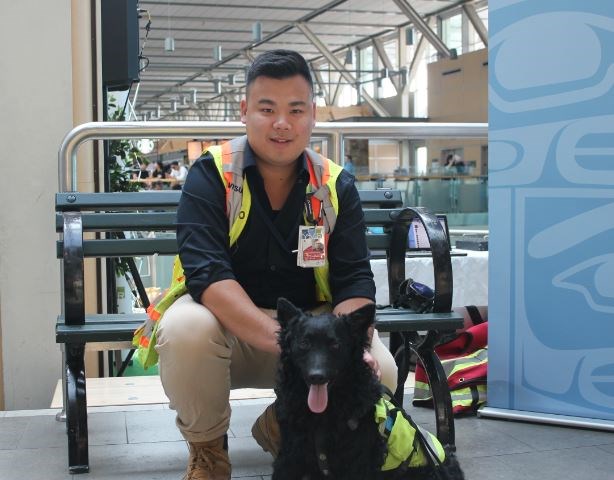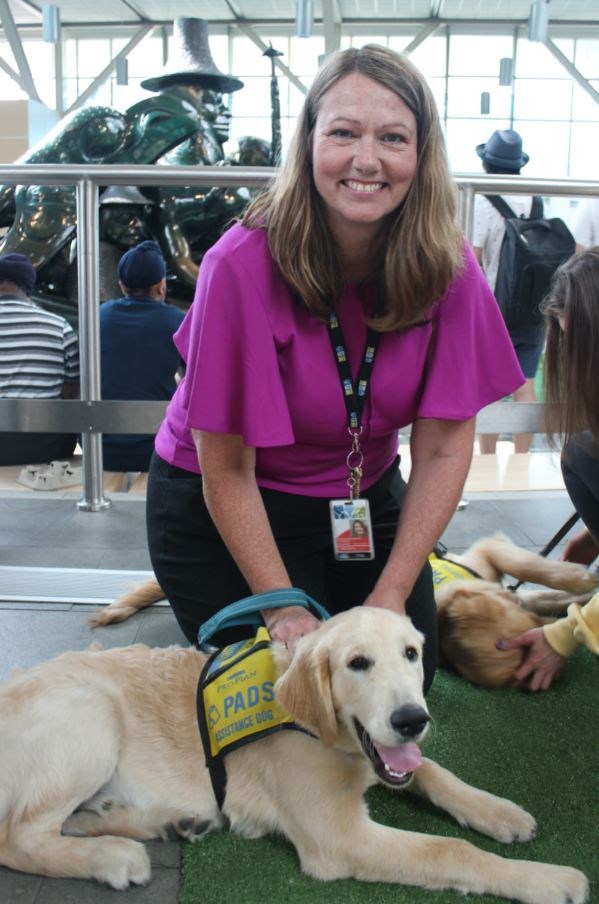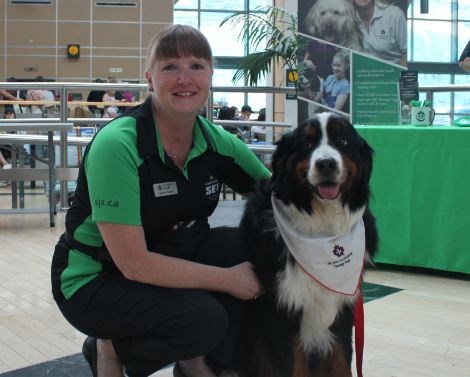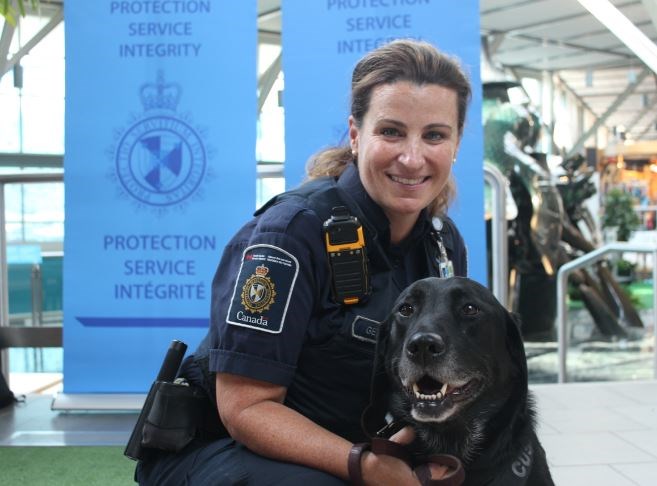From therapy, to border security, to chasing birds off the tarmac, these four-legged Vancouver International Airport workers do it all.
On Monday, 18 dogs were out in the international departures terminal, accepting pats from YVR visitors as staff showed off the important roles they each play at the airport every day.
“The work these dogs do to keep the terminal and the community safe and also travelers calm and happy is immeasurable,” said Reg Krake, director of customer care at YVR. “These dogs, along with their handlers and respective organizations are vital members of our airport community.”
Det. Danielle Getzie, a Canadian Border Services Agency, has worked with her eight-year-old canine companion, Nova, since the pup was less than a year old. Together, the pair searches for drugs and guns at the airport.
“When she comes to work, it’s all fun, it’s play, we’re having fun together,” Getzie said. “She finds whatever she’s going to find, she tells me there’s something there (by sitting) and then she gets rewarded with a tennis ball. So it’s all about play.”
Getzie said sometimes Nova finds suspicious items six or seven times per day, some days she doesn’t find anything at all.
“We cover vast areas. Depending on where we are searching, we’re going to get different amounts of hits,” Getzie said. “Basically we’re in search mode and we’re out hunting.”
Another dog with an important role at YVR is Pilot, a mudi who has been helping to scare away birds on the airfield since November.
“He’s a really good dog,” said Josh Ng, Pilot’s handler and caretaker. “He’s really fun to work with.”

Meanwhile, five-month-old Wilbur doesn’t have a specific job at YVR, but he’s in training to become an assistance dog with Pacific Assistance Dogs Society (PADS) through a sponsorship with the airport.
Sarah Gallagher, a PADS volunteer and airport employee who is helping to train Wilbur, brings the energetic pup to work every day.
“He’s a puppy-in-training so he is learning how to socialize and learning his manners,” Gallagher said.
“He comes to meetings with me, he’s in my office, he will sit and he has to be able to settle…he has to walk through the terminals from time to time and not get distracted so it’s a really fantastic training ground for him.”
YVR sponsored three PADS puppies in March.While the puppies won’t actually work at the airport when they’re older, they will eventually take on one of four jobs: a service dog, hearing dog, accredited facility dog or PTSD dog for veterans and first responders.

Another airport program making use of these four-legged helpers was launched approximately one year ago. Known as the “less airport stress initiative,” or LASI, the program partnership with St. John’s Ambulance sees some ambassador dogs roaming the departure gates with their handlers, helping travelers feel at ease.
“This program’s been a huge success,” Krake said. “Even with our best efforts to make the airport experience a pleasant one for everybody, we recognize that air travel can be stressful.”
For Yvonne Jackson, who brings her Bernese mountain dog, Branston, to the airport, the effect a simple interaction can have for travelers is remarkable.
“(The travelers) just have a calm that comes over them and a smile to their face,” Jackson said. “It’s just nice to see.”

With all these dogs around the airport, it can be tempting to give them all a pat. However, Krake reminds visitors that most of these dogs are on the job and that it’s important to ask their handler if they can be pet.
“While we encourage you all to interact with our ambassador dogs, it’s also important to remember that it isn’t all treats and snuggles for these dogs,” he said. “At YVR, almost all the dogs you see today are actually working animals.”



